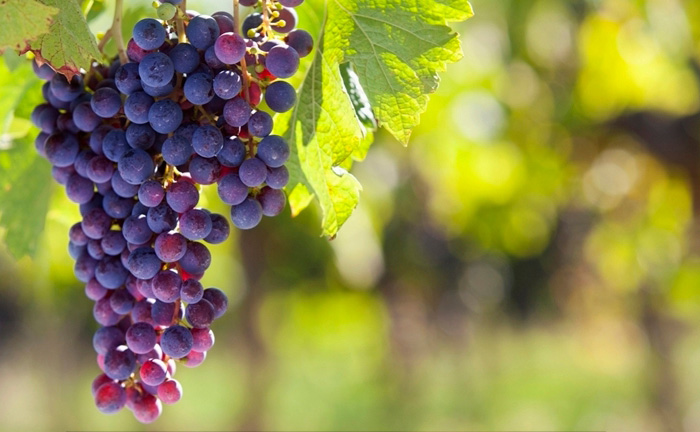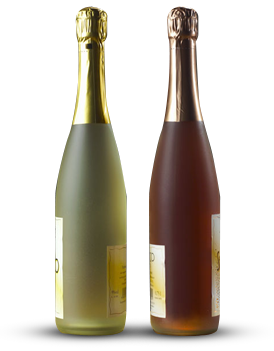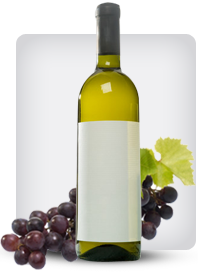

Tag: Wine
I Love Kosher Wine – An Israeli Cabernet Sauvignon
Posted onDon’t make the mistake of thinking that all Israeli wines are kosher, many are but many are not. Once upon a time Israeli wine relied on lesser quality grape varieties such as Carignan and Colombard. Happily those days are over. Actually, I’m told that some of the old Carignan fields have been nurtured to produce high-quality wines. In any case, the wine reviewed below is based on the Cabernet Sauvignon grape that stars in Bordeaux France, California, and increasingly elsewhere including Israel. This bottle comes from the Upper Galilee in northern Israel, said to be the country’s region best region for winemaking.
This wine is not only Kosher, it is Mevushal (flash-pasteurized) which essentially means it retains its Kosher quality no matter who serves it. Once upon a time Mevushal was synonymous with tasteless, the process essentially boiled the guts out of the wine. This is clearly no longer the case. Let’s give it a try.
OUR WINE REVIEW POLICY All wines that we taste and review are purchased at the full retail price.
Wine Reviewed
Dalton Safsufa Cabernet Sauvignon K/P 2007 13.5% Alcohol About $ 19.00
Let’s start by quoting the marketing materials.
Tasting Note: Medium garnet with ruby color; big nose of black current, plum and spice with earthy notes; dry, medium to full bodied, with ripe black fruit and vanilla flavores and a lingering finish. Serving Suggestion: Roast beef, grilled lamb or chicken. And now for my review.
The first sips were mouth filling. The wine was long and rich. The initial food pairing involved a commercially barbecued chicken accompanied by potatoes roasted in chicken fat. The plum taste was dominant but not unpleasant and I also tasted tobacco. This Cab showed a fine balance of fruit, acidity, and light tannins. It was palate cleansing, especially for the greasy roasted potatoes. If I had to look for something negative I suppose that it could have been more subtle.
Then I went with a slow-cooked beef stew with potatoes. Once again the wine was mouth filling. I was tasting dark fruit and dreaming of Bordeaux. Actually I was tasting dark fruit and chocolate with a lot of extract. I added some green jalapeno sauce that didn’t seem to make a difference except to intensify the chocolate.
The final meal centered around packaged meatless baked Ziti Siciliano with eggplant that I generously doused with grated Parmesan cheese. The Cabernet was chewy and refreshing but a bit flat at first. It became better later.
I finished with the cheese pairings. With a Provolone the wine was quite present, powerful, and long but it didn’t really mesh with the cheese. Translation, this wine was too good for this cheese. Then I went to a skim milk Mozzarella cheese. The wine showed good balance and length with a nice touch of oak. To inject a personal note, I wouldn’t waste a $ 20 bottle of wine on a low-market cheese.
Final verdict I would buy this wine again but definitely pay attention to the food pairings. This wine seems to go better with higher quality food. I won’t say that’s a bad sign.
I Love Australian Wine – A Pinot Noir From Southeastern Australia
Posted onThis is our second review of Australian wine in only a few weeks. You may realize that Australia is a major wine exporter in particular supplying the United States and the United Kingdom. While this wine was bottled in the Hunter Valley region of New South Wales in Australia’s southwest, the grapes come from the Geographical Indication of Beechworth in New South Wales neighbor, Victoria. Beechworth was once a great place to dig for gold and is now considered a fine wine region, especially for Chardonnay and fortified wines. If money is no object search out Giaconda’s wines, including their Pinot Noir.
Wine Reviewed Pinot Noir New South Wales (Brokenwood Winery) 2005 14.0% alcohol about $ 20 There were no marketing materials so I’ll quote the back label. “This Pinot Noir is sourced from Victoria’s exciting Beechworth region, in the lower region of the Alpine Valleys. A very hot, dry season giving concentrated flavors… This is a ripe style with background French Oak and sappy/cherry Pinot fruit. The palate has strawberry flavors and lingering soft tannins. Drink over the short term with duck and Asian dishes. Our wines are now sealed with screw cap to guarantee quality and consistency.” Re screw caps: I want to mention that when I used adjustable pliers the bottle opened nicely. And now for my review.
At the first sips the wine was quite powerful with good length and tobacco but no tannins. Its first pairing was with an over dry commercially barbecued chicken breast but its paprika-dusted skin was nice and moist. This Pinot Noir was very present with some chocolate. With the tastier chicken leg it was excessively acidic. On the upside, this wine was chewy and mouth filling. Once again there was tobacco and no tannins.
The next meal involved a middle-eastern specialty known as kube, ground beef in crushed bulgar jackets accompanied by Swiss Chard and a slightly sour, delicious broth. This Pinot Noir was thick. I even got a taste of tar and black licorice. There was a lot of body but, at the risk of repetition, there were no tannins. They didn’t seem to be missing. I tasted dark fruit, especially black cherries. I finished the meal with smoked almonds and tasted tobacco and some earth.
My final meal involved fatty beef ribs cooked slowly with soft wheat kernels and accompanied by a moderately spicy guacamole. The Pinot Noir was round and thick with a lot of oak and a good length. Its acidity worked well with the meat’s grease. Not only the meat was chewy and it presented black, black cherries. The wine retained some power and all of its length when paired with the guacamole.
Before starting on the traditional two cheeses I enjoyed some Matjes herring. The wine was long, balanced, and mouth filling. The herring did not get in the way. A local Provolone actually weakened this Pinot Noir at first its acidity became slightly harsh. A tastier Swiss slightly weakened the wine, which was still powerful and long, oaky with the taste of tobacco.
Final verdict. This wine is definitely worth buying again and again. Next time I won’t waste it on the cheese. And maybe someday I’ll try Giaconda’s offerings. You’ll be the first to know.
Wine Trivia
Posted onWine is probably the most storied and legendary beverage conceived by mankind, and its history goes back literally to Biblical times. This makes for some surprisingly fun trivia hunting; wine is the beverage that always has another surprise in store!
Wine’s first purpose was as a water purifier! A long time before modern methods for sanitizing water, primitive peoples developed one foolproof method for ensuring that water was safe to drink: they’d mix in the fermented juice from fruit and found the alcohol was sufficient to kill any harmful organisms.
The fermenting of beer and wine was one of the first applications of alchemy and hence chemistry, going as far back as the year 1000 B.C.
Wine has an important place in more than half of the world’s religions. Jewish practitioners say a blessing over wine on holidays, and Passover is observed with four cups of wine. Wine makes an appearance throughout Christianity, with even one of Jesus’ miracles being to turn water into wine. It is used in the Eucharist of both Catholic and Protestant religions. The ancient Greeks had the god Dionysus, the god of wine and with it, of both madness and ecstasy. Of the major world religions today, only the Islamic ones specifically forbid wine.
While we assume that glass bottles of wine is the preferred standard, glass bottles only came into use after the 18th century. Before this time, wine was traditionally stored and transported in bulk, usually in wooden barrels or clay casks. For individual-sized serving, it would be carried in a wineskin, usually made from leather and originally lined with resin to keep them from leaking.
The use of oak barrels is frequently touted as a contributor to the taste of wine. But actually, oak was originally used simply because oak wood was plentiful and widely used in the old world, as an all-purpose storage container. Oak wood has a tight grain which makes it leak-proof. Oak barrels also favor the aging of wine because they allow very controlled exposure to oxygen.
One of the reasons that so much fuss is made over the proper serving temperature of wine is that human taste-buds function differently at different temperatures. Sweeter tastes come through better at room temperature, while more savory tastes come through better at colder temperatures.
The world’s most influential wine critic is currently Robert J. Parker, Jr. The lawyer-turned-wine-snob is responsible for creating the 100-point wine rating system widely used today. It is said that a 100-point rating from him is enough to drive up the price of a wine. This effect has even given rise to the term “Parkerization” in the wine world, which is the tendency of many establishments to base their purchasing habits on what Parker’s review says this week.
Of the top wine-producing nations in the world, France still ranks number one at 5.3 million tonnes per year. Italy (4.7 tonnes) is second, Spain (3.6 tonnes) is third, and the United States (2.2 tonnes) is fourth. Australia is in sixth place, but very nearly tied with, of all countries, China! However Australia is the fourth largest exporter of wine and has the third largest market share.
The “French paradox” has it that the French have a diet rich in fatty foods, yet have one of the lowest rates of heart disease in the world. It is the French paradox that led to the realization that wine, which the French consume in great quantities, is beneficial to the heart.
Find More Syrah Wine Articles
What Kind of Wine is Pinot Noir?
Posted onPinot Noir [pee-no nwahr] wines are world famous and grown world-wide. It is both the name of a wine grape and the name of a red wine. And, it is a notoriously difficult grape to grow and wine to make. And, like all red wines, this wine has demonstrated health benefits when consumed in moderation. Also, Pinot has four times the compound resveratrol than other red wines-a compound shown to improve quality of life in laboratory animals.
The Places
Keep in mind that although most New World wine labels will list the grapes in the wine, many Old World wine labels only list the place. The most famous Old World place for Pinot Noir is the Burgundy region of France (in French: Bourgogne [boohr-go-ny]). But you’ll also find Pinot wines from Italy (where it’s called Pinot Nero [pee-no neh-(l)ro]) and Germany (where it’s called Spätburgunder [spayt-boo(r)-g(oo)n-deh(r)].
In the New World, you can find many of these wines from the USA, Chile, and New Zealand. Less common, Australia, Argentina, and South Africa produce fine wines from this grape as well. The Willamette Valley in Oregon produces world-class wines of this varietal. Its relatively cool climate and rolling hills mimic the terrior [the-hrwahr] (soil, geography, climate, etc.) of Burgundy allowing this finicky grape to fully mature and a cool region for the wine to properly ferment and age.
Perhaps because Pinot Noir is a notoriously difficult wine to make, prices of the wine are sometimes quite high; especially from famous regions like Burgundy, France or Willamette Valley, Oregon. Look for value-priced wines from New Zealand and Chile. They make some great wines without the “great” (high) prices!
The Grape
Of all commercial wine grapes, this grape is the most susceptible to common wine grape diseases and maladies including frost, mold, and rot. It has a relatively thin skin making the berries vulnerable. This thin skin also affects the wine making process.
The grape vines are just as finicky as the grapes. They tend to be thin and are prone to mildew, mold, viruses and are susceptible to a variety of grape vine pests.
Due to the sensitivity of the Pinot Noir vine and grape, there are perhaps a thousand clone varieties worldwide. Compared to Cabernet Sauvignon, which only has about a dozen clone varieties, Pinot is one of the most diverse wine grapes in the world.
The Wine
As mentioned, the grape has a relatively thin skin. Since the color in red wine comes from the skins of the grape (the juice is lightly colored to almost clear), it can be difficult to achieve and keep the expected red color through the wine making process. Wine makers usually intensify the color by drawing off some of the juice after the grapes are crushed in order to increase the ratio of wine skins to juice during a process called maceration (soaking the juice with the skins, seeds, and stems). Wine makers must also pay close attention during fermentation and aging to avoid a loss of color before (and after) bottling.
Single varietal Pinot Noir wines (those not blended with other grape varietals) have several classic attributes:
A light red color
Aromas and flavors of cherry or strawberry
Often earthy aromas such as mushrooms or what is often called “barnyard” (in other words, it may stink!)
Acidity that is well balanced by fruit flavors and light tannins in the best wines.
Like all wines, the aromas and flavors can vary significantly from vineyard to vineyard, wine maker to wine maker, and vintage to vintage.
Pairing With Food
Because Pinot Noir wines have lighter body with complex aromas and flavors, they best compliment foods that won’t overwhelm the wine. Grilled or broiled salmon, prime rib, lamb and duck are all great meat choices. Any mushroom dish works really well. But go lightly on the spices which may mask the delicate flavors.
Although the grapes are difficult to grow and the wine making process finicky, several regions of the world produce amazing Pinot Noir wines that are great with food or just with friends and conversation. Many also age well; ask a knowledgeable wine steward for an age-worthy wine before purchasing one for that purpose.
Find More Pinot Noir Wine Articles
The Short History of Malbec Wine Grapes
Posted onGeography and History
Malbec wine is in popularity for last forty years.
The major cause is the name. It is known under many diverse names which Malbec wine is at France means too little. Oxford Companion for Wine lists few 400 synonyms for the Malbec so it should have been very popular at certain stage. But now it is known as the minor blending varieties.
Another nail at coffin for the French Malbec came along with disastrous frosts during 1956. This provided the perfect excuse for re-planting some fashionable & robust varieties. But it isn’t all bad as well. Malbec is a dominant red varietal at Cahors region. Appellation Controlee systems for Cahors requires minimum content of seventy percent Malbec in wines created from an area.
Only historic reference to Malbec shows that it’s coming from surname of Hungarian peasant who 1st spread the variety all over France and further afield. During 1869 Professor Poet introduced the Malbec, Cabernet Sauvignon & Merlot cutting from Bordeaux till Argentina. In a warm & dry Southern American climate it flourish & soon thriving all over. Argentina & Chile. Ironically, Argentina ‘vine pull’ program at 1980’s left 11,000 acres of the Malbec in a ground. That is now back till 26,000 acres producing astonishing rich, complex, ink wines with smoother tannins & ripeness Europe may only dream about. In contrast, these 25 thousand acres with roughly 150 thousand acres of the Malbec in ground prior to ‘vine pull’ & you may better appreciate certain loss.
Chile appears to have escaped madness & it is now Chile’s 3rd most largely planted variety. On contrast Australia have just 1,230 acres of the Malbec in a ground at 2002 & that region has been lessening over the years.
1st mention of the Malbec in Australia arrives from 1901 where Himmelhoch establishes his own ‘Grodno’ vineyard in Liverpool nearby Sydney planted to Malbec and Shiraz.
As most famous grapes, Malbec moves under most different names however these are more commonly used when compared to others. In Bordeaux it is known as the Pessac or Cot, in French Alsace & Cahors regions it is called as Argentina, Auxerrois gives it a name of the Fer, Portugal refers that as Tinta Amarela & here at Australia we call it as Portugal Malbec.
Wine Characteristics
The major aromas from rich Malbec includes: cherry, plum, coffee, chocolate, raisins, leather & raspberry.
A key flavors which nice Malbec exhibits includes: plum, cherry, dried fruits, chocolate, and balsamic.
Aging at oak releases vanilla aromas & flavors.
popular posts
-

Vegan Malbec Wine Options 2025: A Guide to Conscious Sipping As the demand for vegan products continues to rise, the wine industry is responding with greater transparency and more options for conscious consumers
12-23 2025Malbec, with its bold, fruity profile and rich history, is a favorite among red wine enthusiasts. But not all Malbecs are created equal when Read More
-

How to Decant Merlot Properly: A Guide to Unlocking Its Full Potential Merlot, with its plush texture and approachable profile of plum, cherry, and chocolate notes, is one of the world’s most beloved red wines
12-22 2025While often enjoyed straight from the bottle, taking the time to decant a Merlot can dramatically elevate the experience. Decanting serves two primary purposes: Read More

